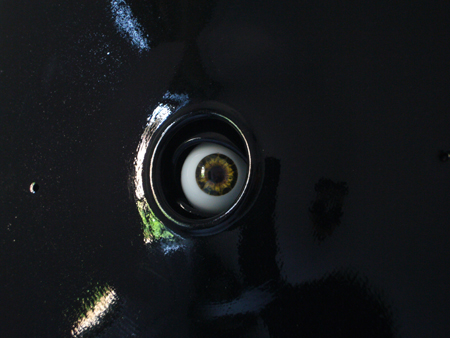Following Golan Levin’s September 17 appearance at CATE, we present you with an excerpt of an interview conducted by SAIC Assistant Professor of Film, Video, and New Media, jonCates, in 2003. This interview was done as part of Cates’s Critical Artware project.

jonCates: Have the histories and developments of live experimental video, electronic visualization events and the performance of video image processing also played a role in conceiving of and realizing your own work?
Golan Levin: If you’re referring to what is generally called ‘VJ’ing, I’d have to say that it has not been a particular influence, and in fact, it’s provided me with a wealth of negative examples. It’s never good to generalize, but grossly speaking, I’ve often found the VJ’ing stuff to be aesthetically uncritical, and rather too concerned with the same, tired, ‘psychedelic’ surface manipulations that seem to persist as a trope in the medium. Another aspect of the VJing scene is that everyone uses the same tools — Nato and Jitter — and so it all tends to look alike to me. Finally, I think there’s an inherent conflict between using pre-stored video materials, and creating a ‘live’ performance event, that only a few practitioners seem to have surmounted. And on a personal note, it seems that most VJ’s aren’t performing sound and image simultaneously, but rather conceive of their work as accompaniment for a music DJ; this leads to a lot of rather arbitrary juxtapositions, I feel, which is exactly the opposite of what my work is about.
That said, I think there are a lot of people doing live experimental video that have really done interesting and important work. Kurt Hentschlager from the Austrian group Granular Synthesis would be at the top of my list. Some of the folks using VinylVideo have found a nice way to enhance the manipulability of stored materials. Sue Costabile is doing terrific work in performing live imagery; her stuff is extremely organic, and her use of video processing is powerful but completely transparent. When I want ‘psychedelic’ stuff, though, I return to the masters of 1960’s light shows, like Michael Scroggins.
And of course, there is a huge tradition of live experimental video which has nothing to do with ‘surface’ manipulations at all, but is altogether more closely related to conceptual and performance art; I’m thinking of the E.A.T., Fluxus, Paik, Gary Hill, and Bill Viola video art/performances. Oddly enough, I think certain aspects of my work are now heading in a direction related to this.
jC: This is very interesting and related to what I was asking in terms of recent histories. Whereas some of the influences you list existed as and/or became increasingly sculptural and installation oriented in their stagings other contemporary practitioners such as Ralph Hocking, Woody and Steina Vasulka, Dan Sandin, Phil Morton and others consider or positioned artists’ tool and system design as a major aspect of their work. Could you describe the role that your instrument design plays within your practice? To what extent is the development of the toolset and/or system in and of itself the artwork?
GL: I’ve tried to have my cake and eat it too. On the one hand, I regard my interactive software systems as meta-artworks, completed in collaboration with a user, whose chief subject is the cybernetic feedback loop that they establish. On the other hand, I also enjoy using my systems as instruments towards specific ends, such as a performances. Usually, however, these performances are intended to illustrate, if not outright demonstrate, the interactive qualities of the system in some hopefully poetic way.
To read the full interview, click here.